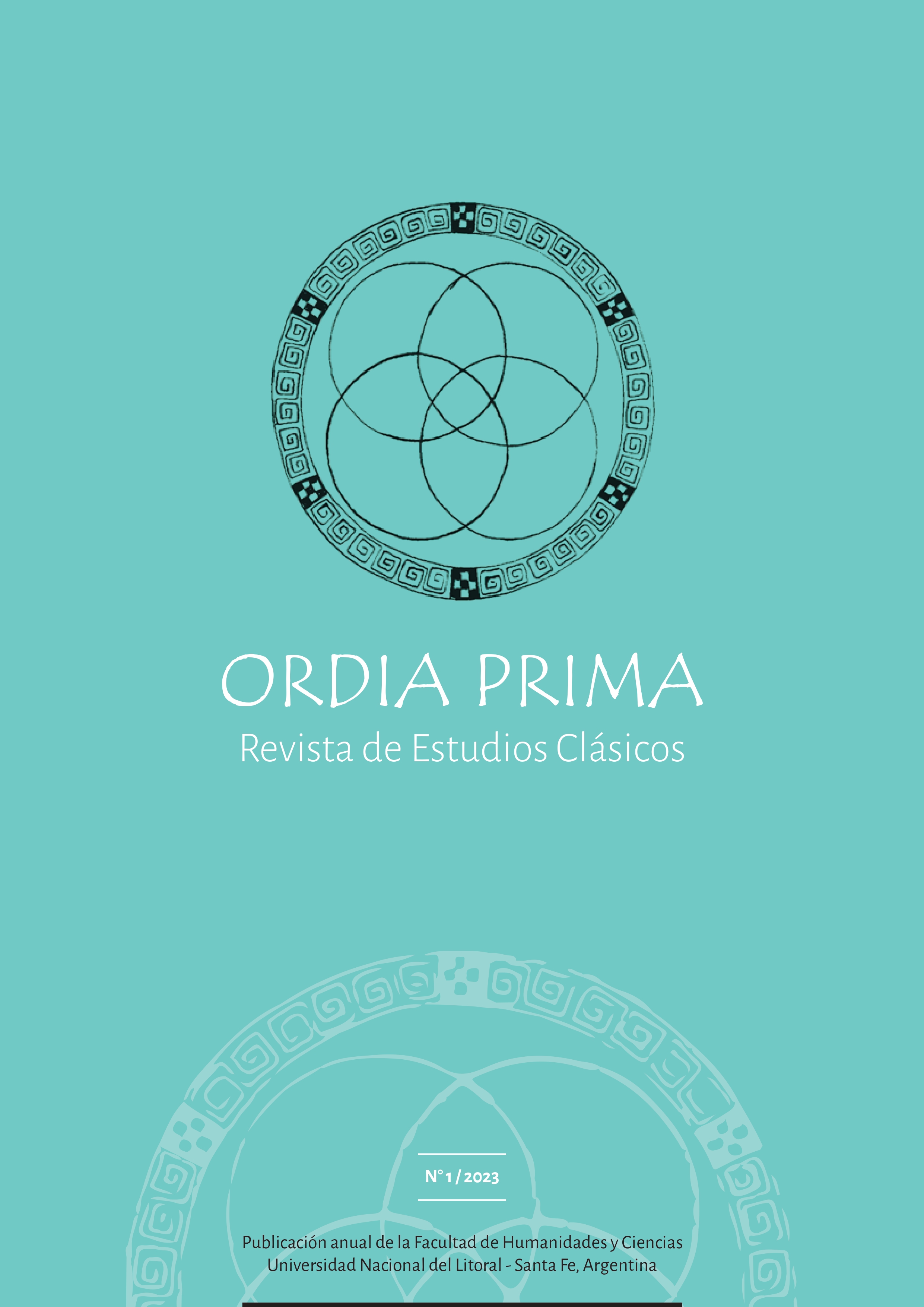La parresía de Aquiles. Libertad de expresión entre Homero y Luciano de Samosata
DOI:
https://doi.org/10.14409/op.2014.2.e0023Keywords:
freedom of speech, Achilles, Homer, Lucian, satyre, autocracyAbstract
Parrhesia, freedom of thought and freedom of speech, is one of the foundations, first of all, of the idea of democracy. It was born from the first experiments of democracy in Athens in the 5th century BC. For us there is no freedom, there is no equality, if there are not these freedoms to think and say everything in front of everyone. Free speech, critical speech, the multiplicity of thoughts and voices are essential principles. No one can say that he possesses the truth, no one can impose his unique thought, his dogma. It is the first antidote to autocracy. Here then parrhesia serves to discuss the conventions, inertia and encrustations of every society. It can unmask any propaganda, any mystification, any illusion. Achilles, between the Iliad, the Odyssey and Lucian's Dialogues of the Dead, is perhaps our first archetype, against the errors and power of Agamemnon, but also against the illusions and conventions of heroic ethics.
References
Bartley, Adam (2005). Techniques of Composition in Lucian’s Minor Dialogues. Hermes 133.3, 358–367.
Brillante, Carlo (2009). Il cantore e la Musa. Poesia e modelli culturali nella Grecia arcaica. ETS.
Camerotto, Alberto (2009). Fare gli eroi. Le storie, le imprese, le virtù: composizione e racconto nell’epica greca arcaica. Il Poligrafo.
Camerotto, Alberto (2014). Gli occhi e la lingua della satira. Studi sull'eroe satirico in Luciano di Samosata. Mimesis.
Camerotto, Alberto (2020). Luciano di Samosata. Menippo o la negromanzia. Mimesis.
Camerotto, Alberto; Paladini, Giovanni (2023). L’Utopia della satira. Libertà di parola e uguaglianza nell’Aldilà di Luciano. In Pallotto, Marina (ed.), Comunicare nell’Antichità, comunicare l’Antichità (pp.121–146). Affinità Elettive.
Cantilena, Mario (2003). Appendice. In A. Heubeck, Omero. Odissea. Volume III (Libri IX–XII) (pp.343–384). Fondazione Lorenzo Valla.
Carlier, Pierre (1984). La royauté en Grèce avant Alexandre. AECR.
Danek, Georg (1998). Epos und Zitat. Studien zu den Quellen der Odyssee. Österreichische Akademie der Wissenschaften.
De Jong, Irene J.F. (1987). Narrators and Focalizers: The Presentation of the Story in the Iliad. Grüner.
Detienne, Marcel (1987). I maestri di verità nella Grecia arcaica. Laterza.
Dolcetti, Paola (2016). Luciano e gli eroi nell'aldilà: ispirazione omerica e divergenze strutturali (Dialoghi dei morti XXIII e XXVI), AOFL 11, 28–40.
Edwards, Anthony T. (1985). Achilles in the Odyssey. Ideologies of Heroism in the Homer Epic. Beitrage zur klassischen Philologie.
Edwards, Anthony T. (1988). ΚΛΕΟΣ ΑΦΘΙΤΟΝ and Oral Theory, CQ 38, 25–30.
Edwards, Mark W. (1991). The Iliad: A Commentary. Volume V: books 17–20. CUP.
Finkelberg, Margalit (1995). Odysseus and the Genus Hero. Greece & Rome 42, 1–14.
Free, Alexander (2015). Geschichtsschreibung als Paideia. Lukians Schrift ‘Wie man Geschichte schreiben soll’ in der Bildungskultur des 2. Jhs. n. Chr. Beck.
Giordano, Manuela (1999). La supplica. Rituale, istituzione sociale e tema epico in Omero. AION.
Giordano, Manuela (2010). Omero. Iliade. Libro I. La peste– L’ira. Carocci.
Hainsworth, John Bryan (1993). The Iliad: A Commentary. Volume III: Books 9–12. CUP.
Heubeck, Alfred (2003). Omero. Odissea. Volume III (Libri IX–XII). Fondazione Lorenzo Valla.
Homeyer, Helene (1965). Lukian, Wie man Geschichte schreiben soll. Wilhelm Fink.
Kirk, Geoffrey Stephen (1985). The Iliad: A Commentary. Volume I: books 1–4. CUP.
Lins Brandão, Jacyntho (2001). A Poética do Hipocentauro. Literatura, sociedade e discurso ficcional em Luciano de Samósata. UFMG.
Lins Brandão, Jacyntho (2009). Luciano de Samósata, Como se deve escrever a história. Tessitura Editora.
Morrison, James V. (1992). Alternatives to the Epic Tradition: Homer's Challenges in the Iliad. TAPhA 122, 61–71.
Nagy, Gregory (1979). The Best of Achaeans. Concepts of the Hero in Archaic Greek Poetry. John Hopkins University Press.
Nagy, Gregory (1981). Another Look at kleos aphthiton. WJA 7, 113–116.
Nagy, Gregory (2003). Homeric Responses. University of Texas Press.
Nesselrath, Heinz–Günther (1992). Ungeschehenes Geschehen. ‘Beinahe–Episoden’ im griechischen und römischen Epos von Homer bis zur Spätantike. Vieweg Teubner Verlag.
Nesselrath, Heinz–Günther (2019). ‘Almost–episodes’ in Greek and Roman epic. In Reitz, Christiane; Finkmann, Simone (Eds.), Structures of Epic Poetry. Volume I: Foundations (pp.565–608). De Gruyter.
Pavese, Carlo Odo (2007). La Protasis dell’Iliade. Eikasmos 18, 11–32.
Reed, Joseph D. (2013). Ovidio. Metamorfosi. Volume V, Libri X–XII. Fondazione Lorenzo Valla.
Segal, Charles (1983). Kleos and its Ironies in the Odyssey, AC 52, 1983, 22–47.
Spina, Luigi (2001). L’oratore scriteriato. Per una storia letteraria e politica di Tersite. Loffredo Editore.
Published
How to Cite
Issue
Section
License
Copyright (c) 2024 Alberto Camerotto

This work is licensed under a Creative Commons Attribution-NonCommercial-ShareAlike 4.0 International License.



